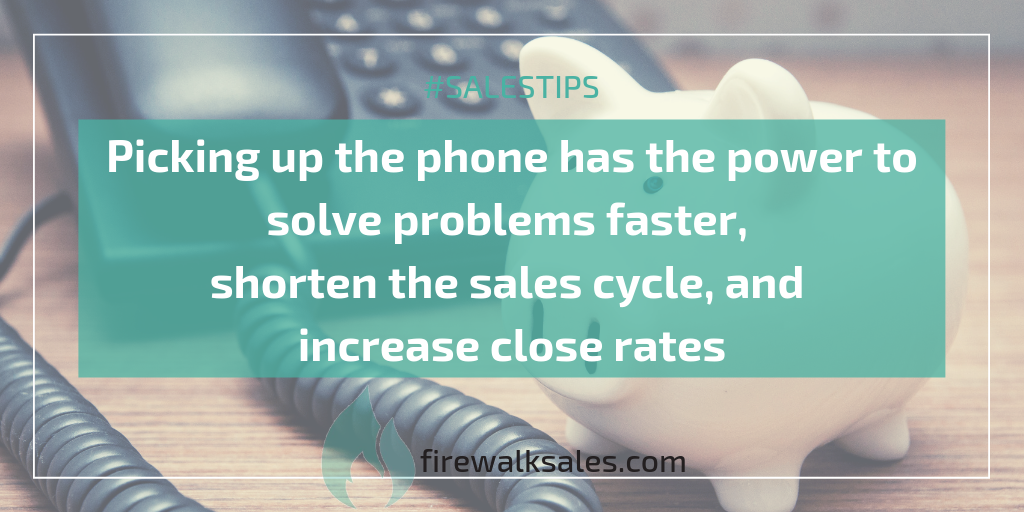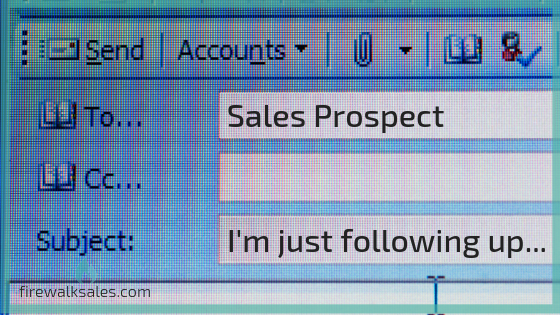Do you get too many emails? Most people will answer emphatically, “YES!”
Ugh. Right?!
Now, be honest: Do you send too many emails? Based on what I see, the answer is probably also YES. Even when picking up the phone would solve problems quicker, shorten the sales cycle, and increase close rates, many people have themselves convinced that email is more “efficient.”
Here’s the thing: Email is great for transactions. However, you must have conversations to build a valuable long-term and/or strategic relationship. If you feel frustrated that your prospects or clients are treating you like a “vendor,” take a look at how much of your interaction is email vs. phone.
You may be tempted to exclaim, “But nobody picks up the phone. It always goes to voicemail.” However, when you truly believe in the value of what you have to share and the partnership you hope to build, you still try. If they don’t answer, no problem. Leave a message. Sure, also send an email, and mail a letter, and try to meet them at a live event. The most successful sales process includes a multi-step, multi-channel approach. There’s just no question that phone outreach is critical for any business that hopes to go beyond order-taking.
Still, hearing that voicemail beep puts you on the spot. I get it. While email can be carefully crafted with as much time as you need to sort and express your thoughts, voicemail requires instant clarity. It can be intimidating.
Here are 10 tips that will help you feel and sound more confident when you are leaving sales voicemails:
- DO have your value and business mission in mind before you dial. You want to help them, not sell. You aren’t “bothering” them if they have a problem you can solve. They aren’t doing you a favor in calling you back. They are helping themselves.
- DO be clear about your goal for the call. If you are calling to get a meeting, say that. Don’t sell your solution. Say you’re calling to set up time so you can learn more about them, and talk about trends or challenges to whatever extent you mutually decide makes sense.
- DO leave your phone number at the beginning and the end. That makes them more likely to write it down, and gives them the benefit of not having to listen to an entire message twice if they miss a digit.
- DON’T give your email address. It’s too cumbersome, they won’t likely email you unless you email them, and you want them to call you.
- DO smile when you are talking, be confident, and put energy behind your words. Even though they can’t see you, your emotion will come through. If you let it, the power of your voice will be far more effective than any written communication.
- DO speak calmly and clearly. If you have to rush to get a message into the amount of time allotted for a voicemail message, you’re saying too much. Say less and slow down.
- DON’T use upspeak. Record yourself leaving voicemails and see if you are ending statements with an upward tone that implies a question. This is called “upspeak.” It betrays your lack of confidence, and undermines your credibility. You should only sound like you are asking a question when you are actually asking a question.
- DON’T give too much information. If you tell them everything they need to know, they have no reason to call you back. Pique their curiosity, and make them feel something. Your energy and clear intention will always trump a long, scripted pitch.
- DO end on a positive note. The best closings are “Thanks in advance” or “I look forward to speaking with you.” These statements have an assumptive close on a call back, and are also warm and friendly.
- DO practice and get help if you need it. This is key for anything you want to get great at doing. There’s zero need to suffer in silence. Why continue to avoid or struggle with something that will unquestionably help you and your business.
Here’s an offer: Go ahead and leave me a voicemail. I’m happy to provide some free tips specific to your business. Here’s my number: 1-603-327-9064.
Any bets how many people actually call me?
# # #




